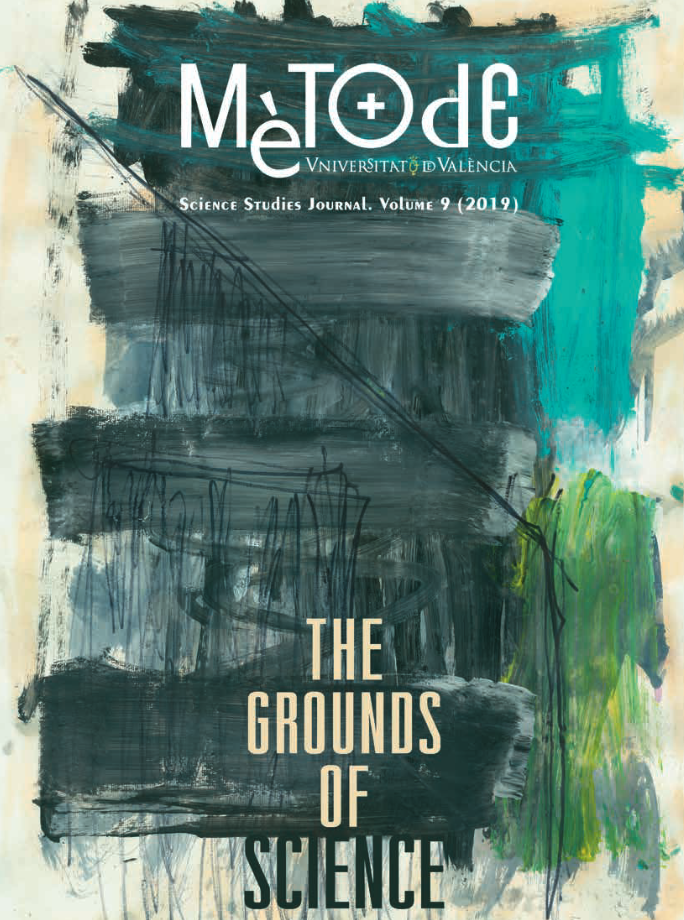Marine biodiversity in space and time: What tiny fossils tell
DOI:
https://doi.org/10.7203/metode.9.11404Keywords:
microfossils, ecology, evolution, paleontology, biogeography Abstract
Abstract
Biodiversity has been changing both in space and time. For example, we have more species in the tropics and less species in the Arctic and Antarctic regions, constituting the latitudinal diversity gradient, one of the patterns we can see most consistently in this complex world. We know much less regarding the biodiversity gradients with time. This is because it would require a well designed continuous monitoring program, which seldom persist beyond a few decades. But, luckily, we have remains of ancient organisms, called fossils. These are basically the only direct records of past biodiversity.
 Downloads
Downloads
 References
References
Bellwood, D. R., Renema, W., & Rosen, B. R. (2012). Biodiversity hotspots, evolution and coral reef biogeography: A review. In D. J. Gower, K. G. Johnson, J. E. Richardson, B. R. Rosen, L. Rüber, & S. T. Williams (Eds.), Biotic evolution and environmental change in Southeast Asia(pp. 216–245). Cambridge: Cambridge University Press.
Breitburg, D., Levin, L. A., Oschlies, A., Grégoire, M., Chavez, F. P., Conley, D. J., … Zhang, J. (2018). Declining oxygen in the global ocean and coastal waters. Science, 359(6371), eaam7240. doi: 10.1126/science.aam7240
Cronin, T. M., & Raymo, M. E. (1997). Orbital forcing of deep-sea benthic species diversity. Nature, 385, 624–627. doi: 10.1038/385624a0
Hillebrand, H. (2004). Strength, slope and variability of marine latitudinal gradients. Marine Ecology Progress Series, 273, 251–267. doi: 10.3354/meps273251
Ingels, J., Clark, M. R., Vecchione, M., Perez, J. A. A., Levin, L. A., Priede, I. G., … Van Gaever, S. (2016). Chapter 36F. Open Ocean Deep Sea. In L. Inniss & Simcock (Eds.), First global integrated marine assessment. World ocean assessment I. New York, NY: United Nations.
Jackson, J. B. C., Kirby, M. X., Berger, W. H., Bjorndal, K. A., Botsford, L. W., Bourque, B. J., … Warner, R. R. (2001). Historical overfishing and the recent collapse of coastal ecosystems. Science, 293(5530), 629-638. doi: 10.1126/science.1059199
Mesquita-Joanes, F., Smith, A. J., & Viehberg, F. A. (2012). The ecology of Ostracoda across levels of biological organisation from individual to ecosystem: A review of recent developments and future potential. In D. J. Horne, J. Holmes, J. Rodriguez-Lazaro, & F. A. Viehberg (Eds.), Ostracoda as proxies for Quaternary climate change(pp. 15–35). Amsterdam: Elsevier.
Mora, C., Wei, C. L., Rollo, A., Amaro, T., Baco, A. R., Billett, D., ... Yasuhara, M. (2013). Biotic and human vulnerability to projected changes in ocean biogeochemistry over the 21st century. PLoS Biology, 11(10), e1001682. doi: 10.1371/journal.pbio.1001682
Renema, W., Bellwood, D. R., Braga, J. C., Bromfield, K., Hall, R., Johnson, K. G., … Pandolfi, J. M. (2008). Hopping hotspots: Global shifts in marine biodiversity. Science, 321(5889), 654–657. doi: 10.1126/science.1155674
Rex, M. A., & Etter, R. J. (2010). Deep-sea biodiversity: Pattern and scale. Cambridge: Harvard University Press.
Tittensor, D. P., Mora, C., Jetz, W., Lotze, H. K., Ricard, D., Berghe, E. V., & Worm, B. (2010). Global patterns and predictors of marine biodiversity across taxa. Nature, 466, 1098-1101. doi: 10.1038/nature09329
Yasuhara, M., & Cronin, T. M. (2008). Climatic influences on deep-sea ostracode (Crustacea) diversity for the last three million years. Ecology, 89(11), S53–S65. doi: 10.1890/07-1021.1
Yasuhara, M., Cronin, T. M., DeMenocal, P. B., Okahashi, H., & Linsley, B. K. (2008). Abrupt climate change and collapse of deep-sea ecosystems. Proceedings of the National Academy of Sciences of the United States of America, 105(5), 1556–1560. doi: 10.1073/pnas.0705486105
Yasuhara, M., & Danovaro, R. (2016). Temperature impacts on deep-sea biodiversity. Biological Reviews, 91(2), 275–287. doi: 10.1111/brv.12169
Yasuhara, M., Doi, H., Wei, C. L., Danovaro, R., & Myhre, S. E. (2016). Biodiversity-ecosystem functioning relationships in long-term time series and palaeoecological records: Deep sea as a test bed. Philosophical Transactions of the Royal Society B, 371(1694). doi: 10.1098/rstb.2015.0282
Yasuhara, M., Hunt, G., Cronin, T. M., & Okahashi, H. (2009). Temporal latitudinal-gradient dynamics and tropical instability of deep-sea species diversity. Proceedings of the National Academy of Sciences of the United States of America, 106(51), 21717–21720. doi: 10.1073/pnas.0910935106
Yasuhara, M., Hunt, G., Dowsett, H. J., Robinson, M. M., & Stoll, D. K. (2012). Latitudinal species diversity gradient of marine zooplankton for the last three million years. Ecology Letters, 15(10), 1174–1179. doi: 10.1111/j.1461-0248.2012.01828.x
Yasuhara, M., Iwatani, H., Hunt, G., Okahashi, H., Kase, T., Hayashi, H., … Renema, W. (2017). Cenozoic dynamics of shallow-marine biodiversity in the Western Pacific. Journal of Biogeography, 44(3), 567–578. doi: 10.1111/jbi.12880
Yasuhara, M., Okahashi, H., Cronin, T. M., Rasmussen, T. L., & Hunt, G. (2014). Response of deep-sea biodiversity to abrupt deglacial and Holocene climate changes in the North Atlantic Ocean. Global Ecology and Biogeography, 23(9), 957–967. doi: 10.1111/geb.12178
Yasuhara, M., Tittensor, D. P., Hillebrand, H., & Worm, B. (2017). Combining marine macroecology and palaeoecology in understanding biodiversity: Microfossils as a model. Biological Reviews, 92(1), 199–215. doi: 10.1111/brv.12223
Downloads
Additional Files
Published
How to Cite
-
Abstract2370
-
(Español)2
-
PDF738
Issue
Section
License
![]()
All the documents in the OJS platform are open access and property of their respective authors.
Authors publishing in the journal agree to the following terms:
- Authors keep the rights and guarantee Metode Science Studies Journal the right to be the first publication of the document, licensed under a Creative Commons Attribution-NonCommercial-NoDerivatives 4.0 International License that allows others to share the work with an acknowledgement of authorship and publication in the journal.
- Authors are allowed and encouraged to spread their work through electronic means using personal or institutional websites (institutional open archives, personal websites or professional and academic networks profiles) once the text has been published.





